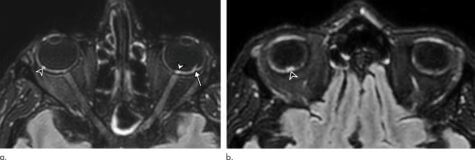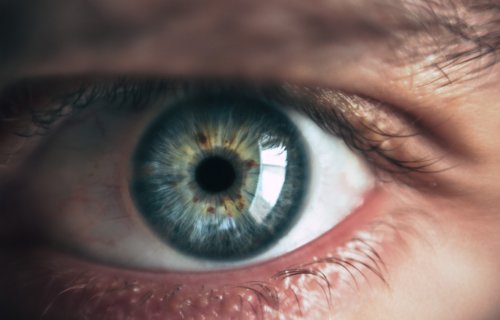OAK BROOK, Ill. — From brain fog to “COVID toes,” the list of after-effects from a coronavirus infection is unsettling and continues to grow. A new study finds patients with a severe case of the illness may need to worry about their eyesight too. Researchers in France say COVID-19 could cause potentially dangerous “nodules” to grow on a patient’s eyeballs.
Scientists discovered that some patients with severe COVID symptoms are developing unusual abnormalities in their eyes. The effects of these nodules are not yet known.
MRI scans of 129 patients revealed nine people who had one or more abnormalities on the back of their eyes. Researchers believe the nodules could have a connection to inflammation the virus triggers.
The team from Rothschild Foundation Hospital in Paris also theorize the problem could be related to patients lying on their stomachs in hospitals. This may cause the veins in the eye to not properly drain. All the patients with these abnormalities had been lying in this position while in intensive care.

Medical mystery targeting patients with pre-existing conditions?
Of the nine patients with eye nodules, two also had diabetes, six registered as obese, and two suffer from hypertension. Another possibility the team is looking in to is the nodules having a connection to intubation.
The pandemic has affected more than 100 million people since the beginning of 2020. While COVID primarily attacks the lungs, researchers say it may also have ties to conditions like conjunctivitis and retinopathy — a disease of the retina that can result in vision loss.
Scientists, fearing eye problems might get overlooked while doctors are treating more serious symptoms, are now calling on health officials to include an eye screening for all coronavirus patients entering intensive care.
“We showed that a few patients with severe COVID-19 from the French COVID-19 cohort had one or several nodules of the posterior pole of the globe,” study lead author Dr. Augustin Lecler says in a media release.
“This is the first time these findings have been described using MRI. Our study advocates for screening of all patients hospitalized in the ICU for severe COVID-19. We believe those patients should receive specific eye-protective treatments.”
Monitoring future pandemic waves for more eye problems
The researchers are performing follow-up clinical and MRI examinations in the survivors to monitor the nodules. Dr. Lecler’s team wants to see if they carry any clinical consequences such as vision loss or visual field impairment.
They are also performing MRI exams and more rigorous tests on new patients with severe COVID-19 symptoms from the second and third waves of the pandemic. Meanwhile, the effects on patients with moderate COVID are still under investigation.
“We have launched a prospective study with dedicated high-resolution MR images for exploring the eye and orbit in patients with light to moderate COVID,” Dr. Lecler adds. “Therefore, we will be able to know whether our findings were specific to severe COVID patients or not.”
The findings appear in the journal Radiology.
SWNS writer William Janes contributed to this report.
